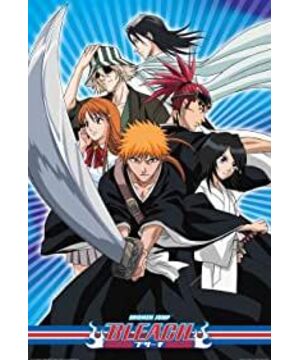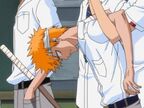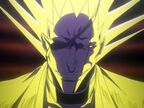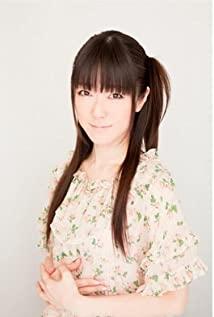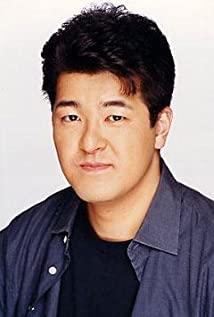Marx said that the real theme of Bleach is class struggle and social development, which tells the history of the rise of a certain force in modern Japan under the impact of class contradictions.
The crux of the story lies in class contradictions, and Aizen is the embodiment of class contradictions. This is why Aizen is extremely powerful. He is not alone, he is a collection of class contradictions in the whole society. There are better characters like this archetype that are not a single person, but a group of people who appear to be particularly powerful. Later, they were designated as special combat power by Yohachin.
The author of the Marxist view of history has endowed the class contradiction with an important feature, which is called the mirror flower water moon - meaning invisible, that is, the invisible in the opening phrase of the first volume "we fear because of the invisible". The meaning of Dongxian is to tell the audience that only those who have a heart and seek justice can discover the true identity of Aizen, while the blind man is used to satirize the huge Jingling Court, that is, the ruling group is blind and blind to the class contradictions in front of him. , in stark contrast to the captain who talks about world justice.
Aizen discovered an important conclusion of Marx's practice through experiments on Death and Xu: the proletariat is the most revolutionary.
This conclusion should start from the composition of the world. Soul World = society, focusing on the bright society on the surface; the virtual circle is the bottom society, which is equivalent to the harsh environment of Liuhun Street. The virtual devouring each other is actually the bottom-level poor in the childhood memories of Rukia and Renji fighting to the death for survival resources. The poor people at the bottom are forced to commit crimes because of their survival, which is the invasion of the corpse and the soul world and the present world. The way of the false appearance is like tearing the set board, which is an ugly artistic expression of tearing the bright surface of hypocrisy to reveal the real society. In short, in the words of Marx, the void is the proletariat. Frequent virtual invasions mean sharpening of class contradictions.
From this, we can see what the experiments of Aizen mean.
First of all, the god of death is the opposite of the void, and the god of death represents the ruling class.
The phantasm of death means that the ruling class is reduced to the oppressed and ruled class. The Masked Corps, in the words of the Water Margin, is Song Jiang, who was originally an official of the imperial court, and Lin Chong, who was originally the captain of the N-unit of the 800,000 forbidden army in Tokyo. The frontispiece of the volume in which Pingzi appeared, "Everything in the world is to drive you to death", which means that Liangshanbo was continuously besieged and suppressed by the imperial court.
On the contrary, the death of the virtual means to rise up, which corresponds to Fang La of the Water Margin.
The biggest difference between Song Jiang and Fang La is the revolutionary consciousness. Song Jiang is looking forward to Zhao'an, hoping to restore the identity of the original ruling class; and Fang La dares to pull the emperor down, and is about to change the dynasty. The mask from the god of death was called a failed half-finished product by Aizen because it was unwilling and unwilling to overthrow Jinglingtei.
Add a paragraph in between. The sworn solution of the god of death, the broken-faced returning blade and the phantom of the mask represent different political identities, court officials, rogues and rebels. It is impossible for a person to be a court official and a bandit at the same time, so the Masked Army cannot be both absurd and swastika, and Dongxian cannot both swoon and return to the sword. Not only that, but strictly speaking, from the perspective of political identity, the mask and the defected Dong Xian cannot use the swastika, and the mask who becomes the captain again cannot be used to blur, even if they can do it in the plot. There was a mask called Kensei who made an exception to use the swastika, and then he got disconnected. (Silver is an exception. In order to show that he is a spy who mixed into the revolutionary ranks, he deliberately kept the swastika of death among all the broken faces.)
Before talking about the bad face, let's talk about the author's admiration for Marx - the result is the Aizen fashion god, the first person in Bleach, and the most compelling keyword "God".
The virtual circle before Aizen is described as darkness, desolation, and eclipse. After Aizen went deep into the virtual circle, there was the first virtual night palace that truly sheltered the world's cold and desolate faces. There was a sun in the palace, because Aizen said that there must be light. The implication of these images is that Aizen brings order, he takes the void away from chaos and disorder and cannibalism, organizes them and returns them to the broken face - the broken face's return to the blade or the liberation of the sword is to arm the proletariat the meaning of. He also introduced the theory of class struggle into an imaginary circle, so that the target of the broken-faced sword changed from the same kind to the god of death representing the ruling class. In addition, he also organized the advanced elements among them into a vanguard, which is the so-called ten blades.
Marx called this communism, which is another identity of Aizen.
Before Aizen, the grades themselves are not important. The important thing is that the more advanced the virtual life is, the more human-like it is, like ordinary people in the world and Jingling Court. Aizen transforms the virtual collective into a face, that is, transforms ghosts into people. But no matter how similar the broken faces are, they are not really ordinary people after all, and they cannot live happily in the sunshine of the present world and the world of corpses and souls like the latter, because the world is not theirs. The gap that cannot be bridged between the two is the so-called virtual hole. (For example, the four-blade nihilistic desires Orihime, and the five-blade requires equality without despair)
This is the reason why Bromian followed Aizen to attack the Soul Realm. Aizen said, we are invincible in front of us—meaning that what you lost in Bromian is only the hole in your body, and what you get will be enough to fill the hole. worldwide!
Two necessary tools, Beng Yu and Wang Jian. The two are the same thing. Bengyu can break the boundary between death and emptiness, and Wang Jian can become king. This is a different way of saying revolution, so their price is human life. Rukia's body gave birth to a collapsing jade to experience the meaning. In addition, Bengyu also has the characteristic of absorbing the wishes of the people around him, which is the cause of Aizen's defeat. Because it involves Ichigo, I will not mention it for the time being.
However, there is a very embarrassing point that Marx did not explicitly say, that is, revolutionary consciousness is not proportional to combat effectiveness... The author of Marx's historical view did two things to remedy the premise of not violating the general direction of Japanese history:
1. Add fashion value to his desired faction. In Bleach, where fashion = combat power, the audience mistakenly thought that they were stronger, and as a result, it collapsed.
2. Imperialist paper tigers - meaning that the evil ruling classes and stubborn conservatives in history are actually stronger than the revolutionaries, but in order to inspire people, make them look like all kinds of monkeys, as if they are vulnerable. The victims of the imperialist paper tigers are Captain Yamamoto and Team Zero. This didn't change history, because the work they were supposed to do had already been handed over to the other Gotei Thirteen, but they, as symbols of the old ruling class, had to die first as a stepping stone for the Boss. Of course, the consequence of doing so is to collapse again.
During the battle, only Hina Mori Tao is worth mentioning, Xiao Tao's keyword is "letter". Letters are letters of faith and believers, so the captains played blue dye, but Xiao Tao was inserted instead. This is not only the author's interest. What simply reflects the author's interest is that Hina Moritao later gave up martial arts to pursue medicine. Other aspects of their own mind.
After Aizen's defeat, he said that Dugu seeks defeat and wants to be an ordinary death god. That is to fool the audience. The real meaning is that the proletarian revolution simply wants to live in a relatively equal world and live like ordinary people. After Aizen is immortal, it makes sense from the perspective of Aizen = class contradiction & communism. For example, Marx said that class contradictions are the basic contradictions of class society, which means that as long as there are classes, there will be class contradictions, so Aizen is almost immortal and can only be sealed. Sealing means that class contradictions are temporarily eased. Aizen's strength while sitting on the chair also increased, indicating that class contradictions were fierce at that time. Aizen and Ichigo teamed up to fight friends. In the past, capitalist feudal society had also cooperated with communism to do something.
Like sitting on a chair and slamming down Lingwang Palace to avoid chanting ghost road ninety-nine, it does not help the actual battle situation, just because the author is the biggest Aizenbuki.
Although Aizen failed to overthrow the ruling class, the road of coexistence between Ichigo and the ruling class has achieved most of Aizen's original intention. After the war, the soul world and the present world are more equal than before. This is the reason why Aizen can accept or even join forces. .
Finally, the theme is expressed through the mouth of Aizen, fear drives people forward - class struggle is the direct driving force of historical development. Aizen is the fear in his mouth. He is monitoring the underground and is ready to break the seal at any time according to the situation. In other words, a ghost, the ghost named Aizen, is wandering underground in the Soul World...
Ichigo, Rukia, Aizen, and Yuha, Bleach's only four characters that must be explained, and it's really not good to talk about Aizen without Ichigo.
Ichigo
Marx said that the people, and only the people are the subjects of historical creation, and he was talking about the protagonist of Bleach, Ichigo.
The present world where Ichigo is located is the present world, and the relative soul world is actually Japan in the past, so the soul world wears ancient times and wears swords and swords, etc. - Ichigo came to the soul world as a future people, using Marx In other words, the choice of Ichigo is the choice of the people, the choice of history! This is why the captains inexplicably opened the way for a young man they had just met, believing that he would definitely defeat Aizen and create opportunities for him, and it was also the reason why all the gods of death were eagerly waiting for Ichigo when Yoha was raging.
Who are the people? The people can become officials in the temple, or they can be the commoners at the bottom - this is the reason why Ichigo is a mixed blood, and it is also the reason why Ichigo can blur Xushan + Swastika, because he is not alone.
There are two things about Ichigo in the entire Bleach book: 1. The battle in the inner world; 2. Every level Boss will ask him why he fought.
The tangle of Ichigo's inner world is actually a microcosm of the battle in the outer world, and the two are synchronized and echo each other. When the proletariat rioted due to class conflict, I mean when Aizen was in trouble with Rukia, it was when Ichigo's internal weakness started to spiral out of control. After settling Aizen, the virtual is no longer out of control. That's how the power balance between the god of death and the virtual in Ichigo is all about.
Why did Ichigo fight, from fighting for others to fighting for himself in the end, reflecting the rise of civilians as a political force in the political arena of modern Japan, feudal Japan that never had much say in fighting for the nobles In modern democratic Japan, where one person, one vote is the master of the house, it corresponds to the change in the identity of ordinary people (nothing) - acting death (part-time workers) - death (ruling class) in the plot.
The entire story and history of Bleach can be condensed into the beginning of saving Rukia. Rukia, as the god of death, grants Ichigo the power of the god of death for emergency. Ichigo got along well with Rukia, and in the process awakened his own power, and rescued Rukia from the guillotine by his own will, and chose to grow together with Rukia. The same technique can be seen in Aizen and Silver, Boss Hirako and Aizen, etc.
Ichigo and Aizen, People and Class Contradiction & Communism. The latter is derived from the former, and the latter is stronger than the former, but due to the need to reverse the cause and effect of the plot, it has become Aizen urging Ichigo. Bengyu will read the will of the people around him. This surrounding person is Ichigo. Historically, the Japanese people rejected revolution and chose to coexist with the ruling class, so Bengyu Aizen stopped evolving and accepted the seal. Ichigo and Aizen have two points to note:
1. In the opening sentence of the first volume, "We are afraid of being invisible", we are the cover character Ichigo, which means that the people can't see class contradictions either. In order to avoid this embarrassing setting, the author asked Aizen to deliberately not use Jinghuashuiyue for the first guardian, thus keeping the force of Jinghuashuiyue. For Ichigo, class conflicts are like shit, they can't be seen or touched, but they can be felt.
2. Wuyue will lose all the power of the god of death, which means that the reason why Ichigo was able to obtain the power of the god of death in the first place was because the god of death could not handle the crisis on his own. The tide will rise—in other words, when the crisis subsides, the temporary worker, acting death, will face insecurity—and this leads to the full-blooming chapter.
Ginjo is not what constitutes the people, Ginjo is the people, but it represents the people of the past, so he has the same power as Ichigo, and can use the mixed power of death and void. What Ginjo did in the past was the same as Ichigo, but the end was the opposite. Ginjo was used as a tool and was thrown away, so he was against the god of death, and Ichigo and Rukia were iron buddies in this era, so he would never forget it until he died. Ichigo's order is reversed... so Tsukishima's ability is to change the past.
Rukia
Rukia represents the god of death, and the relationship between Ichigo and Rukia is the epitome of the relationship between Ichigo and Shilingei, and the epitome of the relationship between the people and the ruling class. The first and last volume's title "Death and Strawberry" is Rukia, and later on, the little friend Renji.
Rukia, the character on the cover of the second volume, said in the opening sentence "People hold hope because they can't see death." In fact, it is a satire of the ruling class who are drunk and can't see the crisis at hand. So Rukia will soon be forced to the French Revolution-style guillotine.
Besides Rukia and Renji, Byakuya can also represent the god of death. Byakuya represents the nobility, and the nobility represents the ruling class - that's why only the three of them go to the Lingwang Palace to soak in the hot springs, soaking in the hot springs = reborn, expressing the drastic changes of the old ruling class during the Yoha period.
It is precisely because Byakuya and Rukia represent the gods of death, so the surname is Kuchiki, that is, the rotten ruling class. Then Kuchiki blossomed in spring under the influence of Ichigo, that is, Byakuya went from sticking to the rules and sending Rukia to the execution ground to gently throwing Captain Yuori, etc. Rukia thrived, learned to swear and became the captain, the so-called reborn. . In addition, their relationship is interesting, Rukia is a stepson adopted by a noble family from a commoner outside.
yoha
Youha = Hitler & God, this method is called one black and two black. This is an obvious fact, Yoha is the strongest, but why was it fashionable? Even the Star Cross Knights are just a fashionable appearance. The defeat of the Ten Blades has memories, sorrows, and art mirrors. The Knights will not be buried.
The Millennium Blood War is for black. The degree of collapse of the plot and battle once gave me the illusion that the author did not collapse before. Below are some key points and interesting ones.
Hitler was nicknamed the mustache, so you have a big beard.
The prototype of the invisible empire is the Nazi Empire. The pure-blooded Aryans, the slaughter of Jews, the execution of internal whistleblowers, and the World City are all designed with reference to history. On this basis, combine the elements of Christianity, such as love, cross, angel, etc.
The invisible empire is hidden in the shadow of Jingling Court (regime), referring to the history of the Nazis coming to power, or referring to the garbage Marvel's S.H.I.E.L.D. Hydra has been lurking in S.H.I.E.L.D. for a long time, and the opportunity to seize power overnight, turning S.H.I.E.L.D. into a S.H.I.E.L.D. of Hydra—the Quinquette building covers the Jingling Court building. The original members were helpless after losing the power of S.H.I.E.L.D.—the solution was captured. Then the swastika was included in the Quincy chapter and became the Nazi swastika—the reason why the swastika is called the swastika is for this very moment. Swastika is actually a derogatory term.
King Ling = Emperor, when the Quincy declared war, behind Yamamoto was the Rising Sun Flag of the Showa Empire of the Axis Powers.
The Spirit King was absorbed by Youha, and killing Youha was equivalent to killing the Spirit King = all the Axis countries lost. Making Youha's corpse a new spirit king means that the reconstruction of the post-war order is based on the corpses of the Nazis, and the suppression of the Nazis will never turn over. Therefore, Yiyong, who represents the new generation in the future, was born as the god of death and can smash the Nazi poison at will.
The fiction of the bloody battle has a new meaning, representing the inferior races defined by Hitler, such as the Jews, who believed that intermarriage with them would stain the blood of Aryans.
Yoha, Spirit King and Ichigo = The Trinity of Christianity. Youha calls himself a father, giving and empowering himself, corresponding to the Holy Father; the Spirit King maintains the Three Realms, corresponding to the Holy Spirit; the Son of the Savior is naturally the protagonist Ichigo, including Ichigo before the bloody battle. Seiko sacrifice and reception said that Ichigo was often stabbed, Rukia and Wuzuki.
Christianity says that Jesus is the mediator, and when people want to go to heaven, they must use Jesus as a bridge - so Youha has to wait for a guardian to come down and open the way. In addition, the tower of Yoha's heaven is painted with an inverted cross - the inverted cross is the symbol of the apostle St. Peter. According to legend, he has two keys in his hand to reach heaven.
From the very beginning, the author asked Ichigo to see Yamamoto calling him an old man and a monk calling him bald, creating an atmosphere of equality. The reason why Ichigo didn't call him a human when he saw the Spirit King is not because the author respects the Emperor, but because there is something more cool behind him - although Youha inserted a sword of the Spirit King, it was Ichigo who cut him apart in the end! The Spirit King is a god, the Spirit King is a king, and the Spirit King is still the father of the two of them. Killing the gods, killing the king, killing the father, the author of Heizi has reached a triple climax in an instant, and it is not one time! To avenge Yamamoto who was slashed with a single slash, Yoha & King Ling will be slashed twice with a single slash! This is the darkest part of the show.
The world that Yoo-ha said before his death was heaven, and the author's attitude is to go to your heaven.
The author deliberately exaggerated the abilities of the Star Cross Knights, and then made them lose comically for satirical purposes. Only the female knight is worth mentioning.
The Bomb Girl ended up the worst because she was the most loyal and responsible to the Nazis, and she was worried about the future of the Empire. Other girls are lazy, and she is the only one who is actively working.
The discharge girl was the second loyal, and the other girls retreated to her charge, so she arranged for her and the third loyal girl to become the plaything of a mad scientist, and life was better than death.
The gluttonous girl and the zombie girl shemale have no sense of responsibility, so they represent the progressive force against the Nazis, and finally survived. One thing to add here, the implicit meaning of fashion is that it is deeply influenced by the western leftists - shemale zombie girl anti-friends, and white-left politically correct movies, such as The Handmaid's Tale, who bravely resist evil are always lesbian and transgender A meaning like human. In addition, Bleach has a lot of shemales, and messing is also one of the performances. Bleach's role is ambiguous whenever he has a chance, especially male and male ambiguous.
idlers etc.
Urahara represents the development of science and technology. According to Marx, science and technology are the primary productive forces, and productive forces determine the relations of production. While pretending to be loyal, Urahara fiddled with inventions that could shake the foundation of the Soul Society, such as the candidate for the King of Jade Spirit, so Aizen despised him. Urahara is the whitest character in the whole play, and sacrifice on the road to science is not Bleach's theme.
Kenpachi, Yamamoto, and the monk are actually one, a symbol of strength for the stubborn conservatives of the ruling class. Yamamoto was unwilling to join forces with the people, so he was eliminated by the times. Yamamoto's Zanpakutō swastika and sealing of monsters are just different ways of talking about war. Fire is the fire of war, and the swastika means that a long-term war will completely destroy society. Kenpachi can be seen as the part of Yamamoto's true power that was sealed by the author. Kenpachi is something like an army. He often has friction with Byakuya, who represents the nobles. It's not a blind design. The palace will not be destroyed, but there will be no death. If one protector of the king dies, there will be thousands of other protector of the king.
Epilogue
The title of the last volume is "Death (Rukia) and Strawberry (Ichigo)", the cover is Ichigo's outstretched hand to Rukia, the frontispiece "Even if we are invisible, we will not stop", we include Rukia Kia and Ichigo echo the "We are afraid of being invisible" in the first volume with only Ichigo.
According to Marx, the changes in it show that the class contradiction has changed from the contradiction between the enemy and ourselves to the contradiction among the people.
The author, on the other hand, refers to the act of pulling the people into the camp by the ruling class in order to survive as bleaching.
Off topic, Burn The Witch
The choice of the UK as Japan's counterpart itself is a reflection of the high level.
The dragon is the emptiness, and the dark dragon = the emptiness that invades the world. Table London = present, inner London = past, interpreting the history of Britain and even Europe.
The male protagonist corresponds to the Fullbringer who has the Spirit King Fragment in his body to attract the Void. Japan has an emperor and England has a queen. The tactical team Rukia's Nazi outfit, and the chorus team's lower body is the Void Palace costume... Yi Yong is old enough to make a cameo.
As a capitalist base, the United Kingdom has handled class conflicts relatively well. The once-in-a-hundred-year-old, once-in-a-million-year-old fairy-tale dragon is a piece of trash fish that disappears at the click of a finger, and there is absolutely no sense of tension in Bleach. The style and design are no better than Bleach. Visually measuring the length of short stories to medium stories, the frontispiece is a love poem, the tone is relaxed and happy, and the transition from male-male ambiguous to female-female lily shows that the author is even more degenerate.
View more about Bleach reviews


